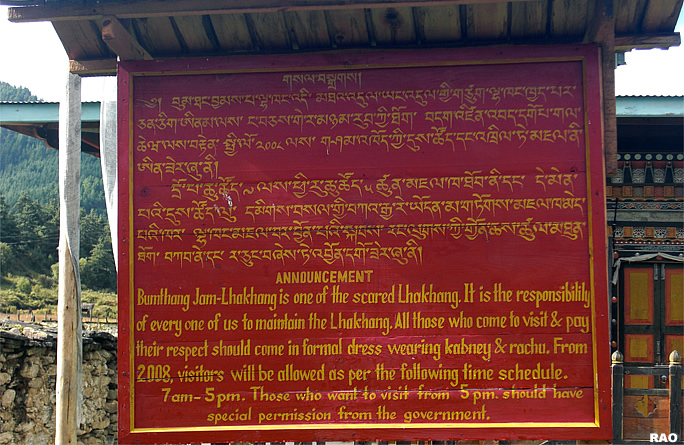|
Dzongkha:
Bhutan's National Language |
 |
Bhutan's
Culture: Dzongkha |
 |
Bhutan Information |
|
|
 |
|
Dzongkha
: Tales of vanishing tongues
|
 |
The Last Speakers: Of all the human creations, oral stories are among the most ancient and enduring.This living art has been nurtured over generations.Today, however, this art is on the verge of dying, as the last speakers across the globe struggle to find listeners.
 |
The linguist K David Harrison, in his book The Last Speakers, has rescued some of these stories, and made it possible to read them in English.The pages are filled with personal stories and encounters, as the author shares the secrets revealed in interviews with the last speakers of vanishing languages from remote cultures from Siberia to India and Australia.
In the Australian outback, an aboriginal takes the author to a cave and explains the ancient rock paintings.Like many of his people, Charlie, an indigenous inhabitant, is able to tell the paintings in the form of a story without any further aide memoire.
One of the stories recounted in the book is that of the "Rainbow Serpent".Believed to live in billabongs or small lakes, they can measure 100 feet and are multi-colored, depicted to have gaping jaws and jagged teeth.This mythical creature plays an important role in the aboriginals' Dreamtime, an important aspect of their culture preserved in their language. |
|
As the story goes, the incessant crying of a child awakens the serpent from its slumber.The child wants a white lily, and does not stop wailing even when it is produced.The serpent gets agitated and starts preying on people and wandering in the outback, creating more billabongs and filling them with life.
Eventually it comes to Croker Island, where Charlie lives, and starts to devour people.For the narrator, the serpent represents the Dreamtime, and is a symbol of both a bringer of life and death, to be respected and feared.
The Dreamtime is a complex web of beliefs, place and myths preserved in the native languages.The combination of aboriginal languages and stories provide an oral link to life and events that happened tens of thousands of years ago, at a time when Europe was deep in the Paleolithic.
It is surprising to the layman that black holes still exist in the linguist map.One such hole turns out to have existed very close to Bhutan.
 |
| A few years ago, and only just recently announced, the author uncovered a hidden language called Koro in the Indian state of Arunachal Pradesh.Little is still known about the language; it is in the same Sino-Tibetan family as Dzongkha, Bhutan's national language.
Although Dzongkha is not in imminent danger of going extinct as Koro might be, it is nevertheless under constant pressure, as more of Bhutan's younger generation are exposed to western popular culture, and often find it easier to converse in English.For example, when many educated people find it hard to think of the Dzongkha word, they say, Nga chi gi Inkay na bha wa chin (in our English, it is said like this). |
|
Dzongkha's survival is probably assured due to its status as Bhutan's national language.
Indeed, Dzongkha is just one of some two-dozen languages spoken in the country.For every 25,000 Bhutanese, there is a language.Bhutan's culture is built on oral traditions.
Although a linguist himself, Harrison has written The Last Speakers for non-specialists.The book is more than the story of languages and black holes: rather, it explains the importance of languages, and what happens when they disappear.
The book is a powerful reminder of the need for a small landlocked nation, not only to preserve the oral arts, but also ensure to create an environment for them to evolve and grow.If not, in addition to losing unique and irreplaceable stories, we also run a risk of losing a diversity of perspectives of the world.

|
| Contributed by KUENSEL, Bhutan's national newspaper, author: Tshering Tashi for the Asian Review of Books, 2012
|
| Information on Bhutan |
 |
| Links |
 |
 |
 |
External
Links |
|




